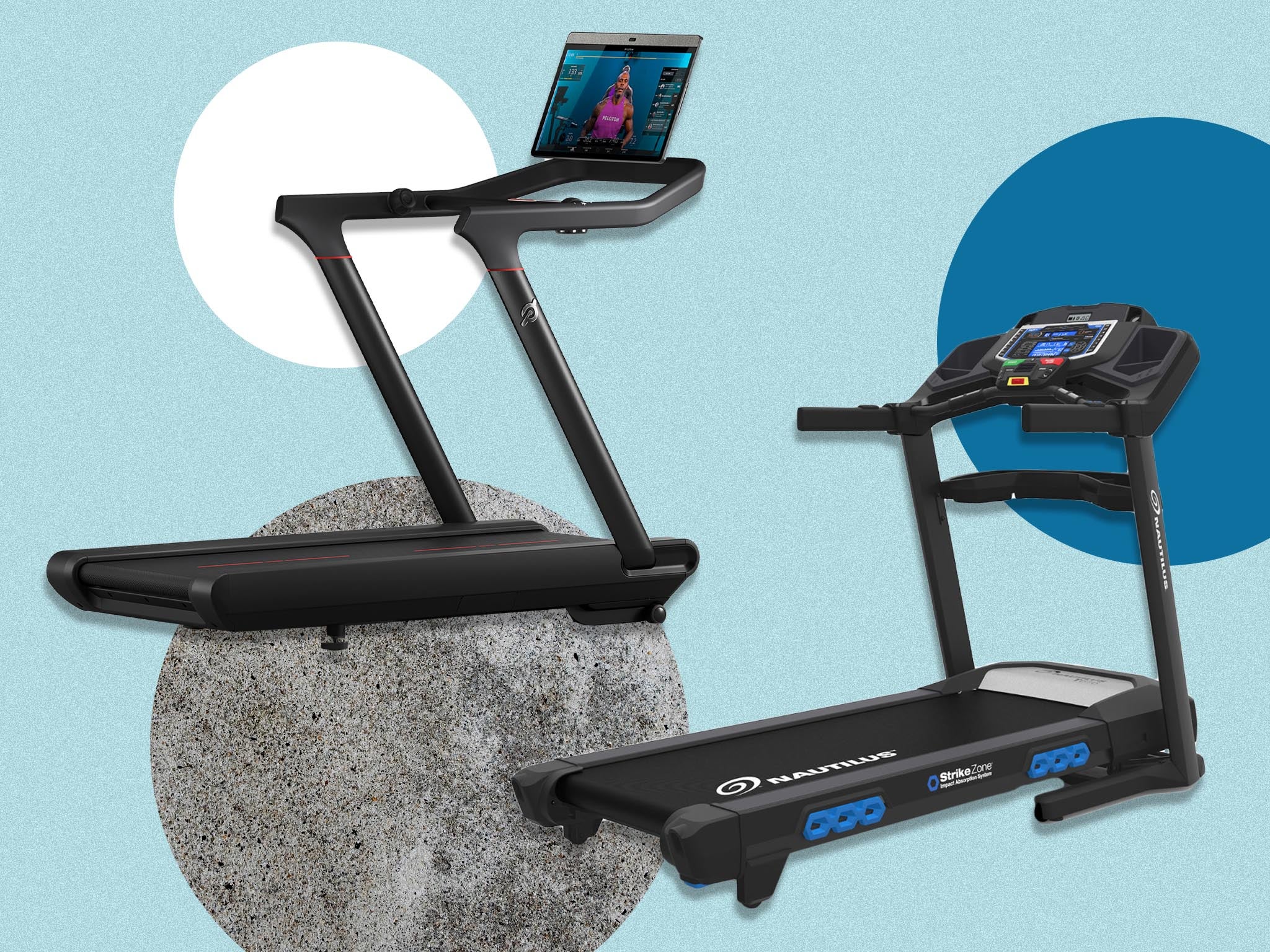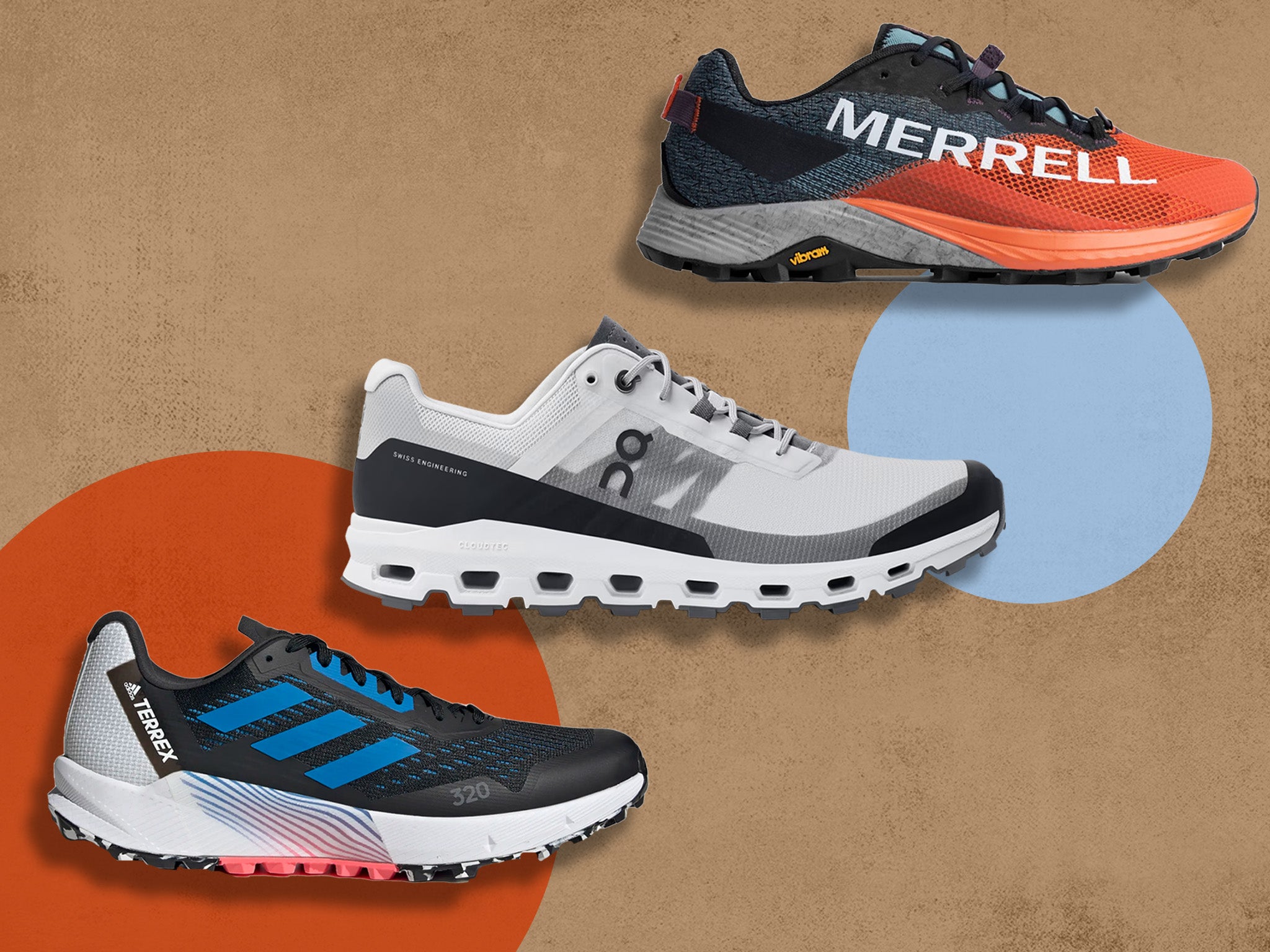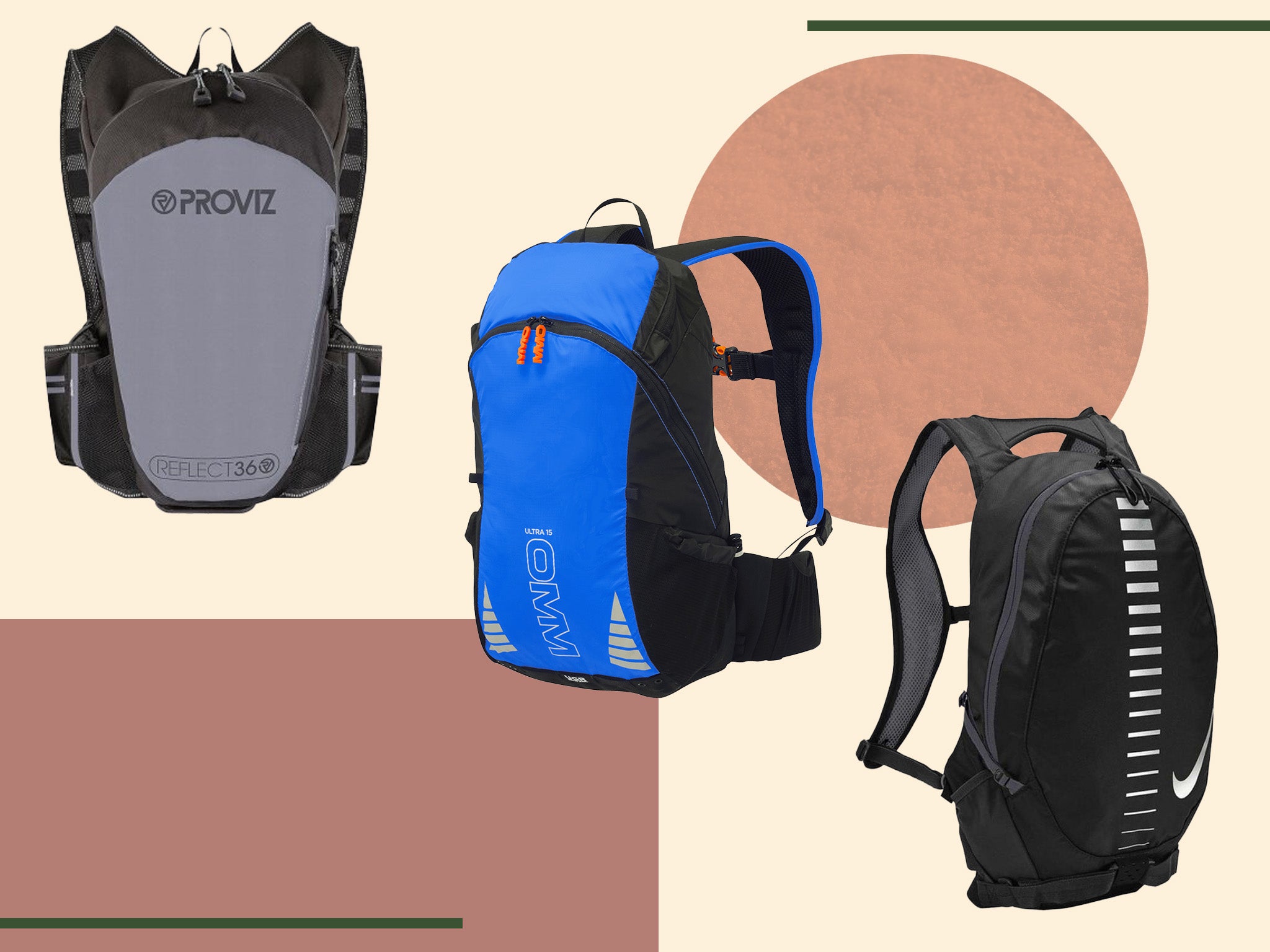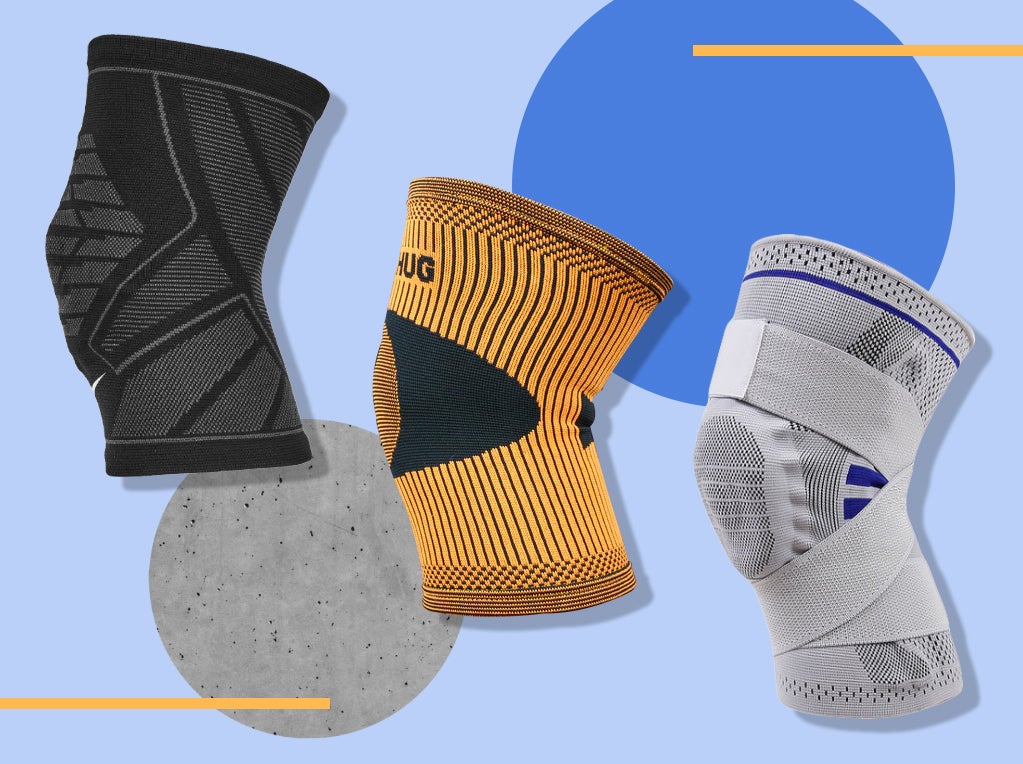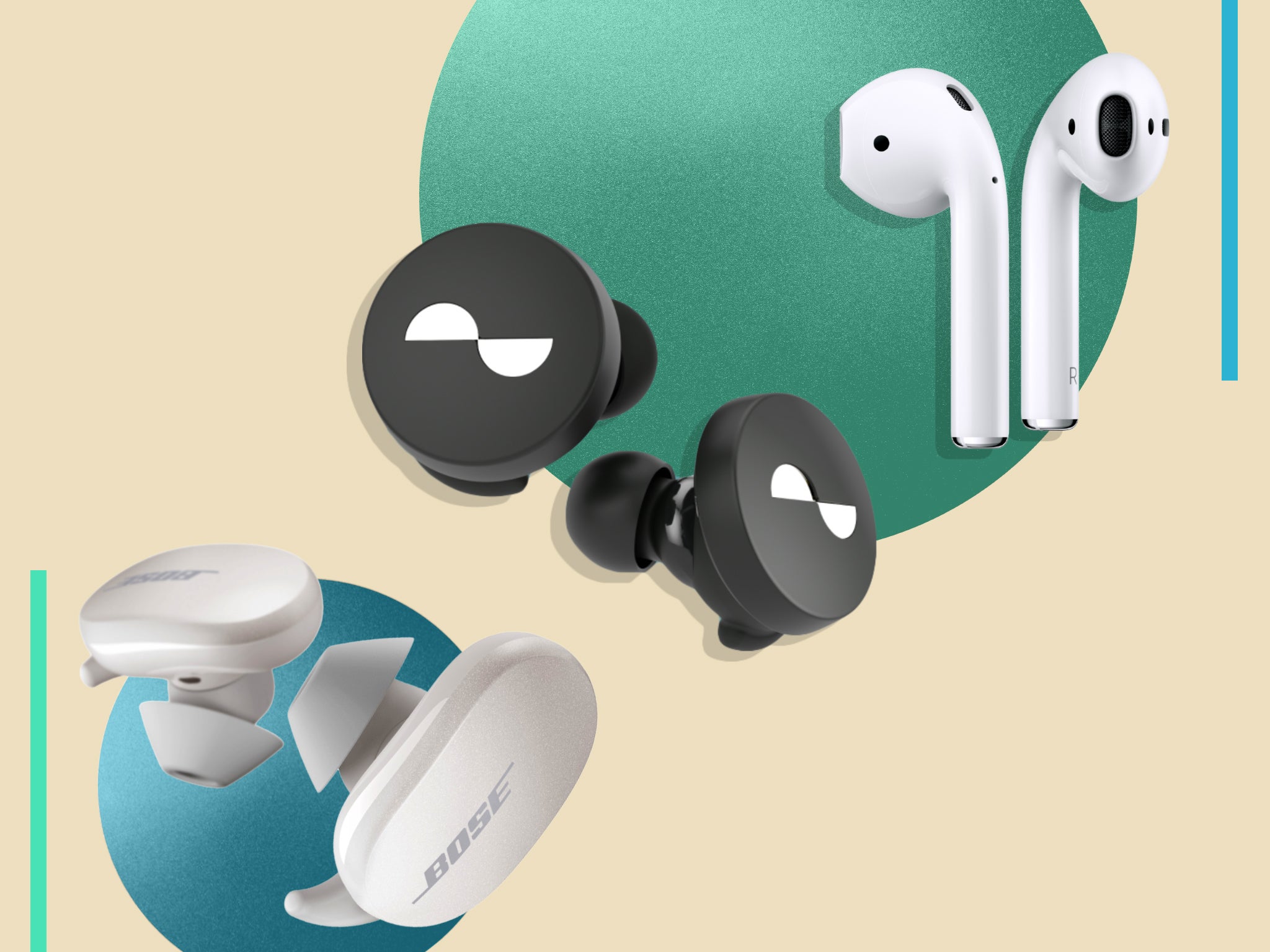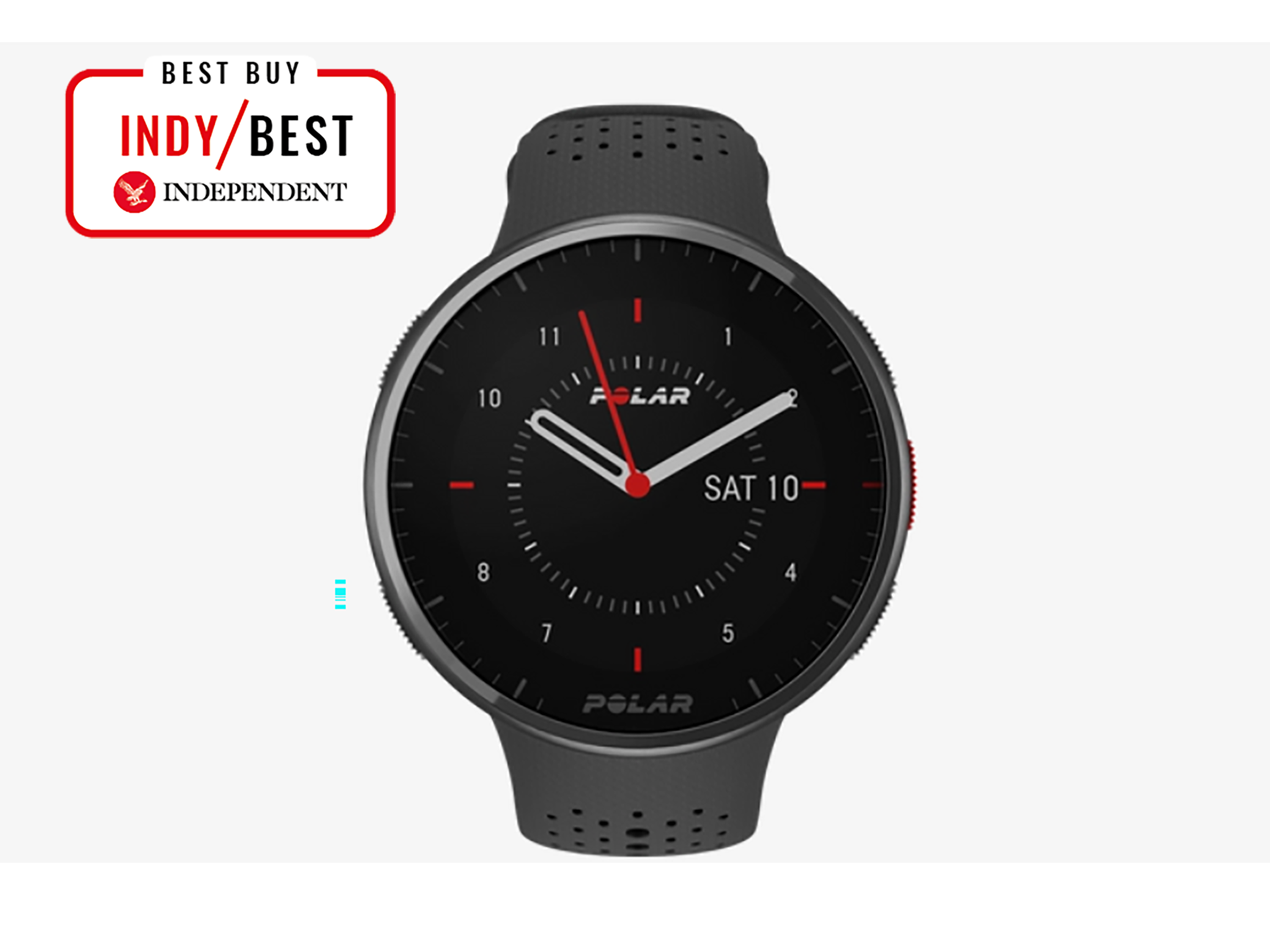
The Independent's journalism is supported by our readers. When you purchase through links on our site, we may earn commission. Why trust us?
8 best running watches to track your pace, heartbeat and more in 2023
Analyse your every step with these wrist-based data monitors
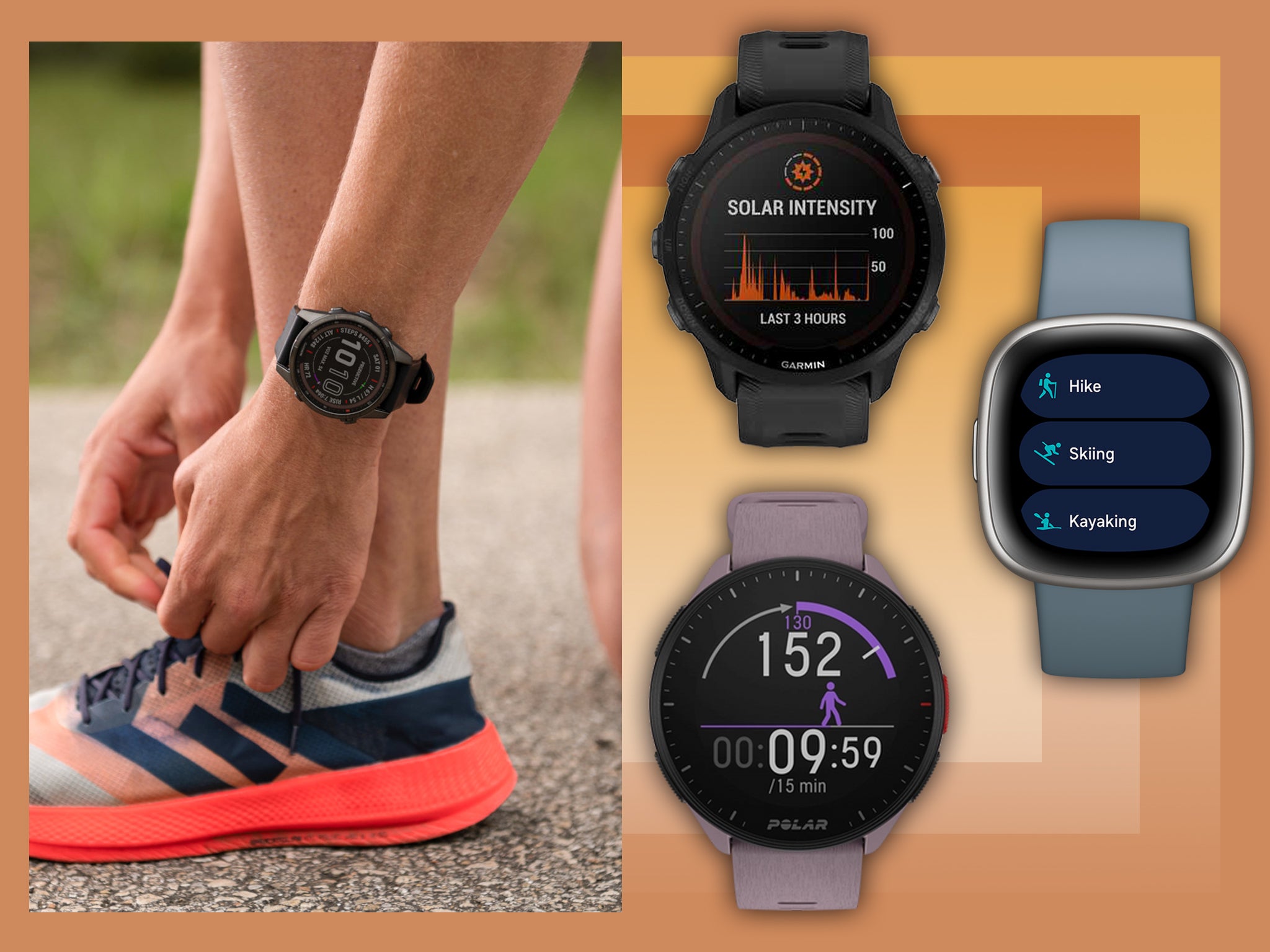
If you’re ready to take your running performance up a level, one essential that you can’t afford to skimp on is a good running watch. These specially designed sports watches can track each stride, record metrics such as pace and heart rate and analyse insights to help you set goals. When you know exactly how fast you’re running, or even how heavy you land on the floor, you can gradually increase your performance to avoid going too fast too soon and getting injured.
In our busy lives, we only have a specific amount of time available to train and a good running watch will help make every second count. During the run you can check how fast you’re actually going and step up the pace if you’re plodding too slow. And a watch helps you to pace yourself and stay consistent so you run each mile in a specific number of minutes rather than starting out like a speed demon and crashing and burning.
Top-quality running watches act as coaches on your wrist, giving you data that shows you what’s going on with your body as you take your strides. The most basic watches can cover heart rates and calories burned but the more advanced models will record your VO2 max, so you know what your body’s capable of, estimate your recovery time after each session and allow you to set race fueling alerts.
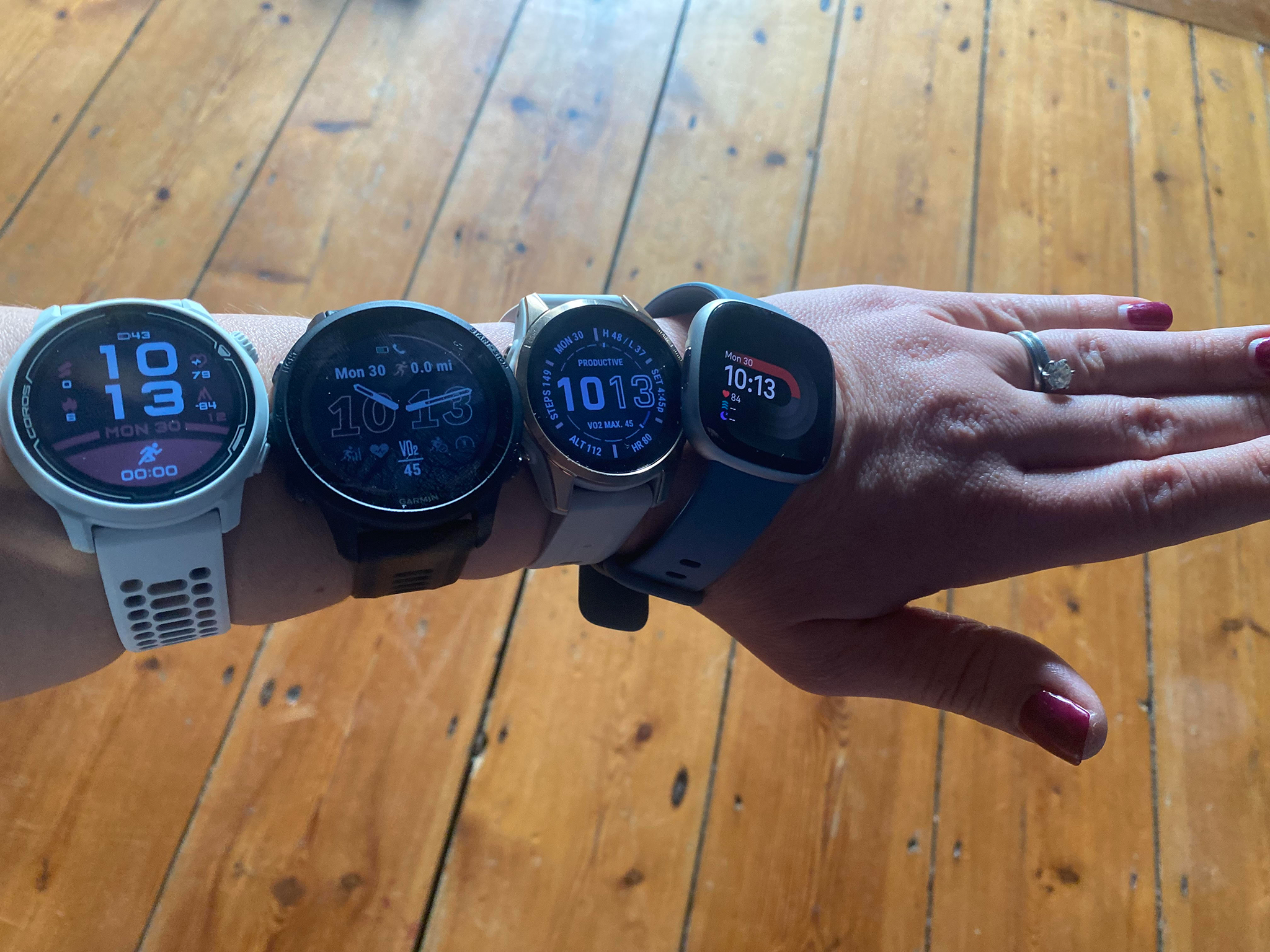
Like music to pace your tempo? Most running watches also offer smartwatch features such as compatibility with Spotify or Amazon music and the ability to receive text and WhatsApp notifications. Some of them even allow you to use your phone like a wallet and simply tap your wrist to pay.
Until a few years ago, Garmin and Fitbit dominated the market when it came to running trackers but if you visit any sports retailer today you’ll see the likes of Coros and Polar competing for amateur athletes’ attention. And that’s not to mention the sports functionality that’s been developed for smartwatches by Apple and Samsung. Prices can range anywhere from £70 to £800 upwards.
To help you navigate the running wristwear jungle and find the right watch for your needs, we’ve tested out some of the most well-known brands over the high and low end of the price bracket and the list below features the best of the best for all budgets
How we tested
We spent hours setting up the watches, trying to sync them with both an Apple and an Android phone and scrolling through the features to find exactly what they were capable of. After playing with them inside, each was tested outside to record performance over distances from Park Run to over 10 miles.
We rated each watch for usability – i.e. how easy it was to find the key statistics – as well as accuracy of GPS, app support and comfort on the wrist. We also tested the watch in daily life, assessing how it looked and felt over 24 hours.
The best running watches for 2023 are:
- Best overall running watch – Polar pacer pro: £289, Polar.com
- Best running watch for accuracy – Garmin forerunner 955 solar: £550, Sigmasports.com
- Best running watch for analysing biomechanics – Coros pace 2: £179.99, Decathlon.co.uk
- Best running watch for value for money – Fitbit inspire 3: £84.99, Currys.co.uk
- Best running watch for simplicity – Fitbit versa 4: £164.93, Amazon.co.uk
- Best running watch for competitive athletes – Garmin fenix 7s: £689, Wiggle.co.uk
- Best running watch for android users – Samsung Galaxy watch 5 pro: £329, Samsung.com
- Best running watch for an intuitive interface – Polar pacer: £199.50, Polar.com
Polar pacer pro

- Best: Overall
- Weight: 40.8g
- Battery life: 35 hours in training mode / 7 days in watch mode
The Polar Pacer pro is a serious tool for runners of all abilities looking to level up at an impressively competitive price. With its onboard GPS, it can keep track of your runs, delivering accurate information on pace, distance, cadence, elevation, running power, and more in the Polar Flow app. And all for around half the price of a comparable Garmin watch.
We found the screen easy to read thanks to the watch’s reflective colour display that meant we didn’t have to squint to read the numbers. But our favourite feature by far, is that we found this the best watch for motivating you to go that little bit harder with coaching detail and rich training analysis. From the watch itself you can access FuelWise smart fuelling recommendations, Strava live segments and four different fitness tests. As for recovery, it’s able to break down sleep stages and tell you how long you’ve slept for with additional insights into sleep continuity and sleep regeneration based on the amount of REM sleep managed.
The only reason it loses half a star is because we enjoy running with music and the Polar Pacer pro isn’t quite there just yet. It can control the music on your phone, so there’s no need to use your handset during runs, but it can’t store tracks on internal memory.
Garmin forerunner 955 solar
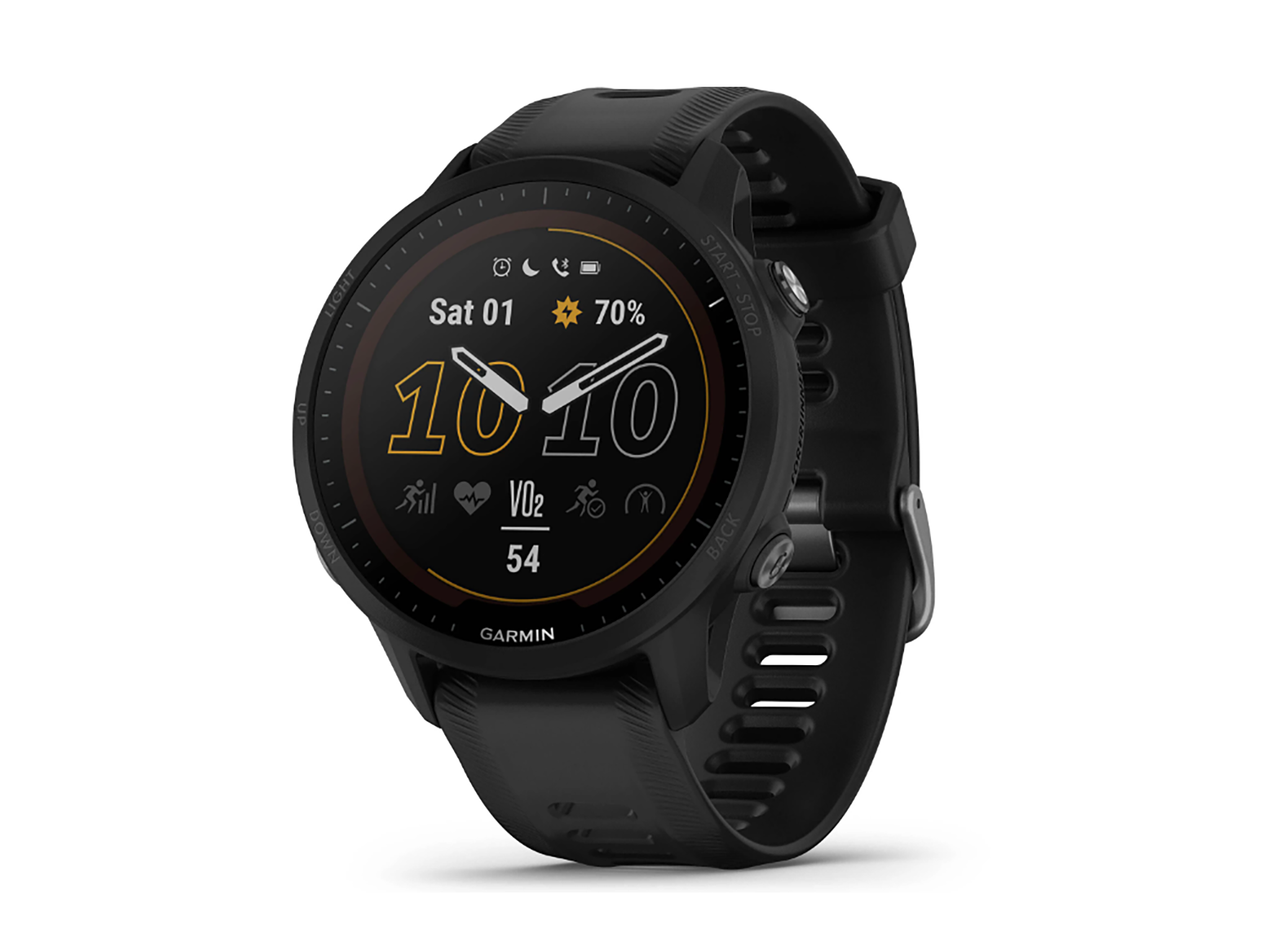
- Best: For accuracy
- Weight: 52g
- Battery life: 49 hours in GPS mode / 20 days in smart watch mode
For accuracy, reliability and durability, you cannot fault a Garmin watch. We’ve tested several models over the past 15 years and always found they helped massively with pacing and post-run insights through the Garmin Connect app. We’re also a big fan of the Connect’s training plans that allow you to select pre-designed running, cycling or triathlon plans developed by the world’s top coaches at various experience levels. You can choose 5k, 10k, half marathon, and marathon along with getting started or improving fitness options and these will be sent to your watch so you get daily reminders to complete your workouts.
As we already had Garmin Connect, setting up the forerunner 955 solar took just a couple of minutes and that included being given tips about what the watch could do. One of the most impressive features, especially for those who like to try new routes or run on trails, is the live mapping feature. Whether you’re running on pavements in the city or out in the wild, the watch provides full-colour, built-in mapping to keep you on track.
It also has a touch screen which adds to ease of navigation and is brilliant for reading text and social media notifications. We had fun playing with the solar charging feature, which works best if you’re doing longer runs or cycling rides of more than an hour. If you’re not outside enough to maximize the solar charging capacity, a short 30-minute charge gets you back up to 50 per cent of battery life if you’re running low.
Coros pace 2
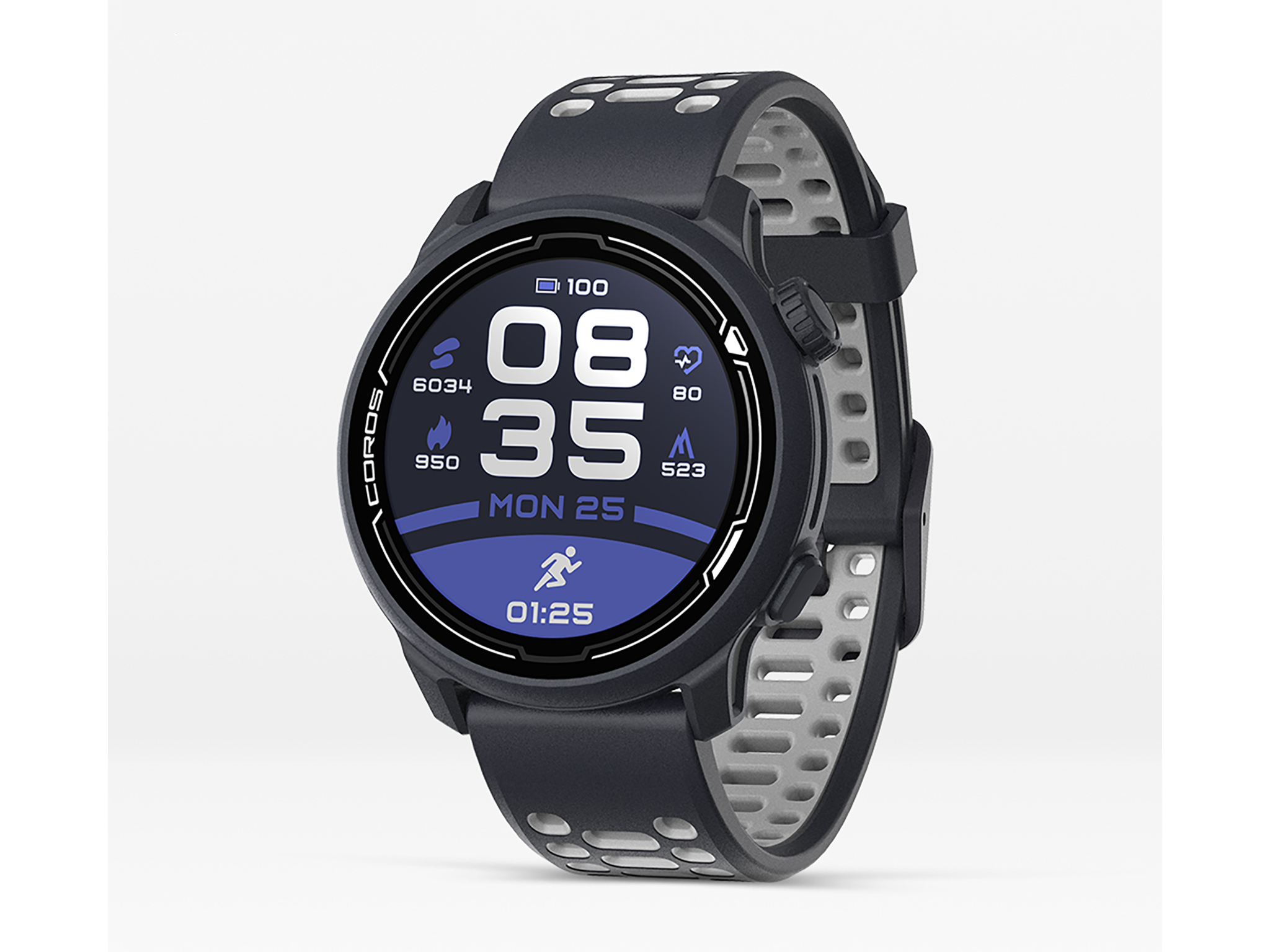
- Best: For analysing biomechanics
- Weight: 29g
- Battery life: 20 days of regular use, 30 hours in Full GPS mode, 60 hours in UltraMax mode
With a lightweight and slim design, we were very impressed by how comfortable the pace 2 feels on the wrist. We recommend upgrading to a nylon watch strap, which feels secure on the wrist, is better for recording accurate heart rate data and is 50 per cent lighter than the traditional silicone material that makes up most watch straps.
If you’re nursing an injury or you’re reaching a certain age where the body starts to decline and injuries become more prevalent, this can provide insights into ground contact time, left to right balance and stride height when paired with a POD sensor that clips onto your running shorts or shoe laces. Knowing your left to right balance will tell you if you land heavier on a specific side so you can adjust your technique before injuries occur or work your way back from being hurt sensibly.
For the price, you couldn’t get better metrics. The Coros app works well on both Android and iPhone and connects to Strava and Training Peaks, so you can compete with, or get encouragement from, other runners and connect with coaches. However, there are just two improvements we’d like to see. Firstly, it’s not compatible with Apple health. Secondly, Vitality members, who track activity points that earn them rewards on cinema and spa trips, may be disappointed that it does not yet recognize Coros.
Put simply, this watch is our recommendation for anyone that’s not a heavy Apple user or a Vitality member.
Fitbit inspire 3
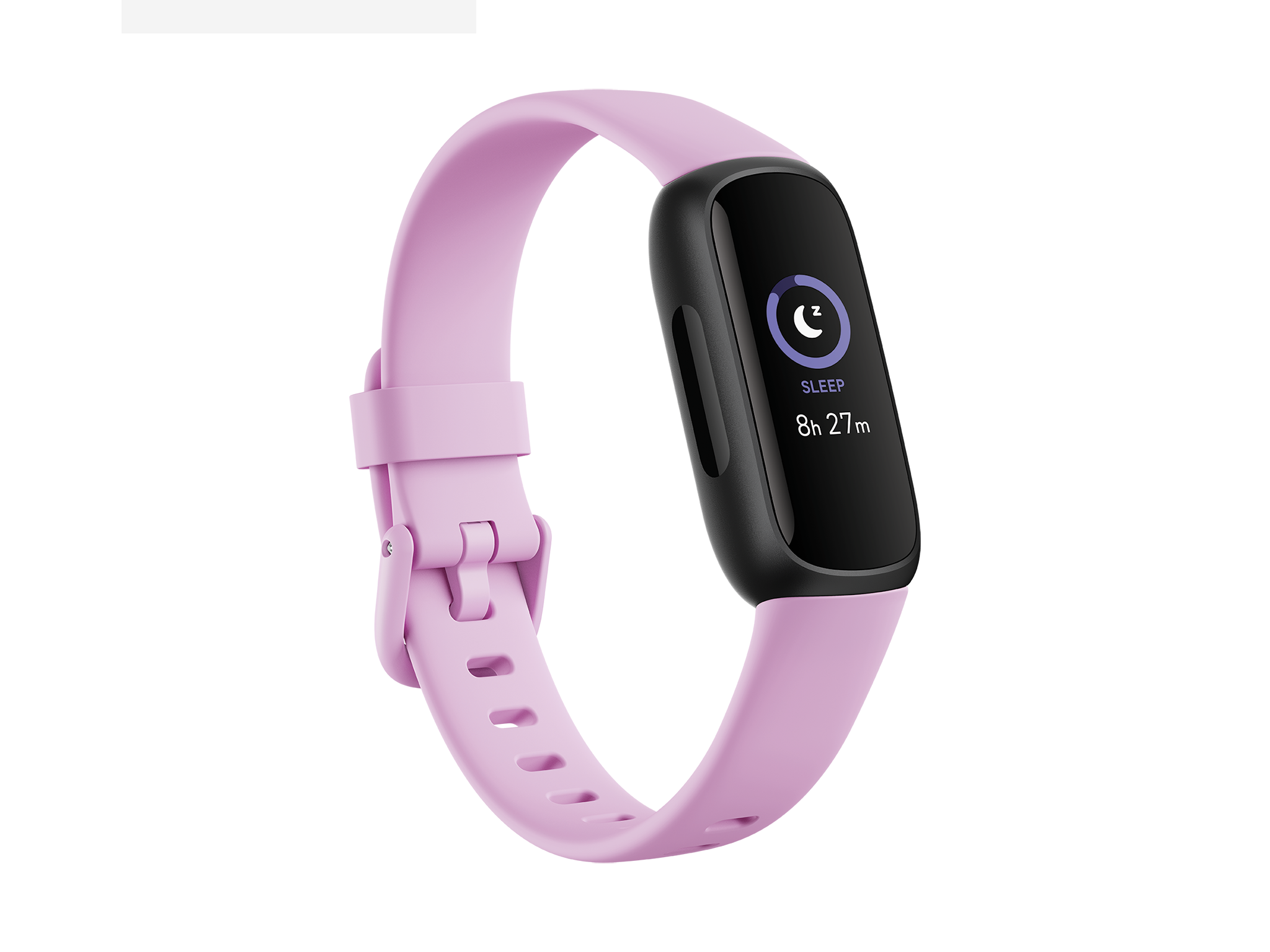
- Best: For alue for money
- Weight: 21.3g
- Battery: 10 days
If you’re new to running, you really cannot beat this £80 Fitbit. For Park Runners and those training for 10k or half marathon races, it’s all you need to track heart rate, pace and calorie burn in real time as you run.
Technically it’s an activity tracker rather than a smart watch but Bluetooth functionality will allow you to broadcast text message and social notifications from a nearby phone to the inspire 3’s screen so you don’t miss anything important while you are pounding the pavement. We also like the slimline design that looks unassuming on the wrist so you can wear it with formal dress as well as sports kit and not feel like the watch is running the lines of your outfit.
Despite the small size of the screen, it’s easy to read thanks to the colour OLED display. This screen is also waterproof up to 50 metres so you can swim in it too. And let’s just say, we were surprised that such an affordable watch also gave us SPO2 scores so we could see oxygen circulation as well daily scores that showed how hard we could exercise that day or how well we were managing stress.
Fitbit versa 4
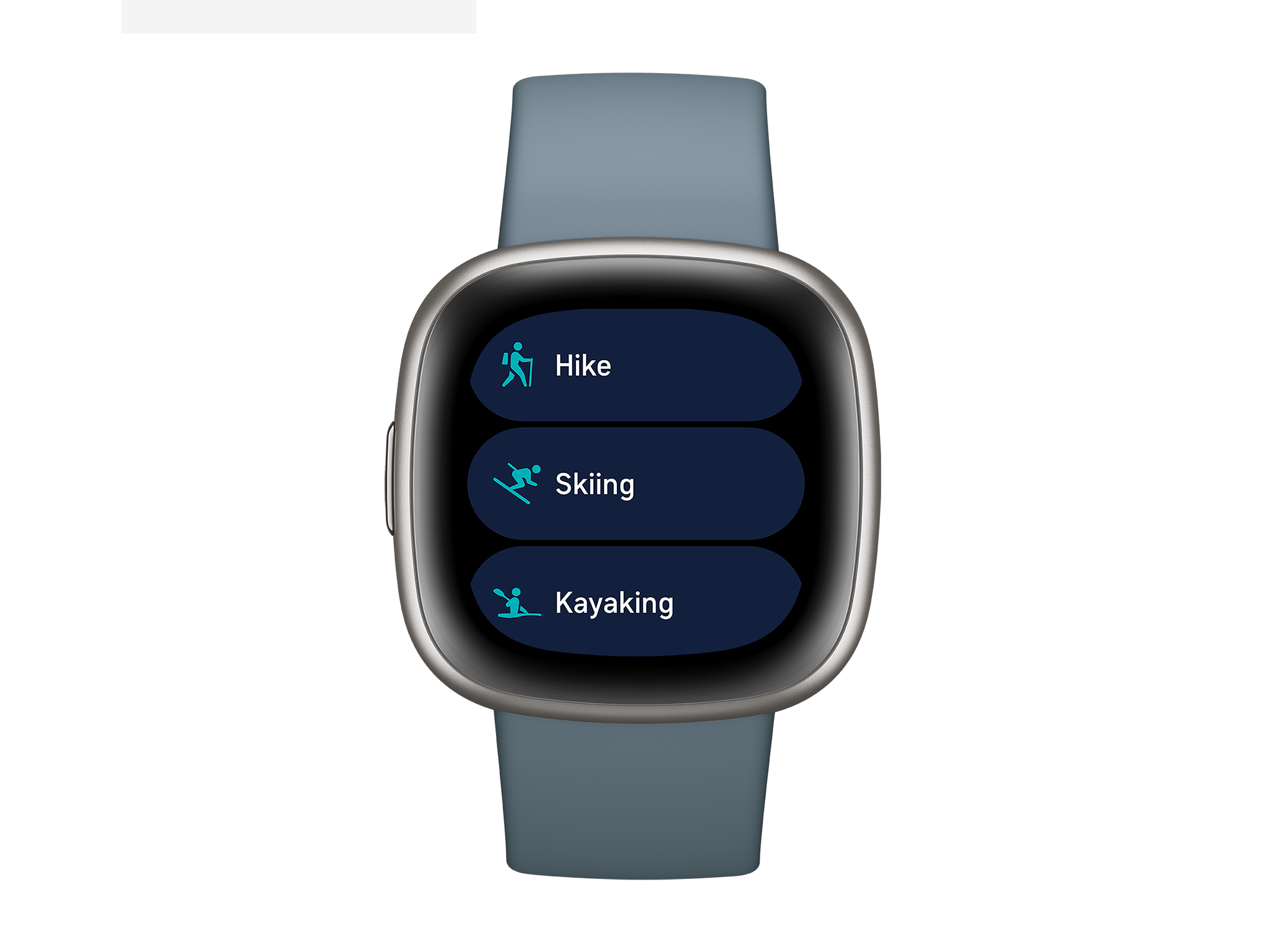
- Best: For simplicity
- Weight: 40g
- Battery life: Two days in always-on mode / 6 days in auto display shut-off mode
If you’re looking for a watch that’s simple to use, the Fitbit versa 4 shows all your key fitness statistics in large font on its 40.5mm square screen with gently curved edges. Data available includes heart rate, temperature tracking, cardio fitness and daily readiness scores as well as steps counted. Like the Apple watch, it will nudge you to get up if it notices periods of inactivity, and it offers continuous heart rate data through Fitbit’s purepulse optical heart rate sensor. This includes heart rhythm so you can be forewarned of heart activity that could signify a serious health issue.
Amazon Alexa is also built-in and we enjoyed talking to the watch to set alarms and check the weather before we left the house to decide on appropriate running kit. Having a daily readiness score that tells you if you have sufficiently recovered from the last session is useful, but it can also be annoying if you have a busy lifestyle and just want to run to relieve some stress.
Overall, it’s a stylish watch that’s not too bulky, has an easy-to-read screen and will answer questions through Amazon Alexa. But it does not have wifi compatibility, nor can it play music directly from the watch, so you’ll still need to take a phone out with you to run with tunes.
Garmin fenix 7s
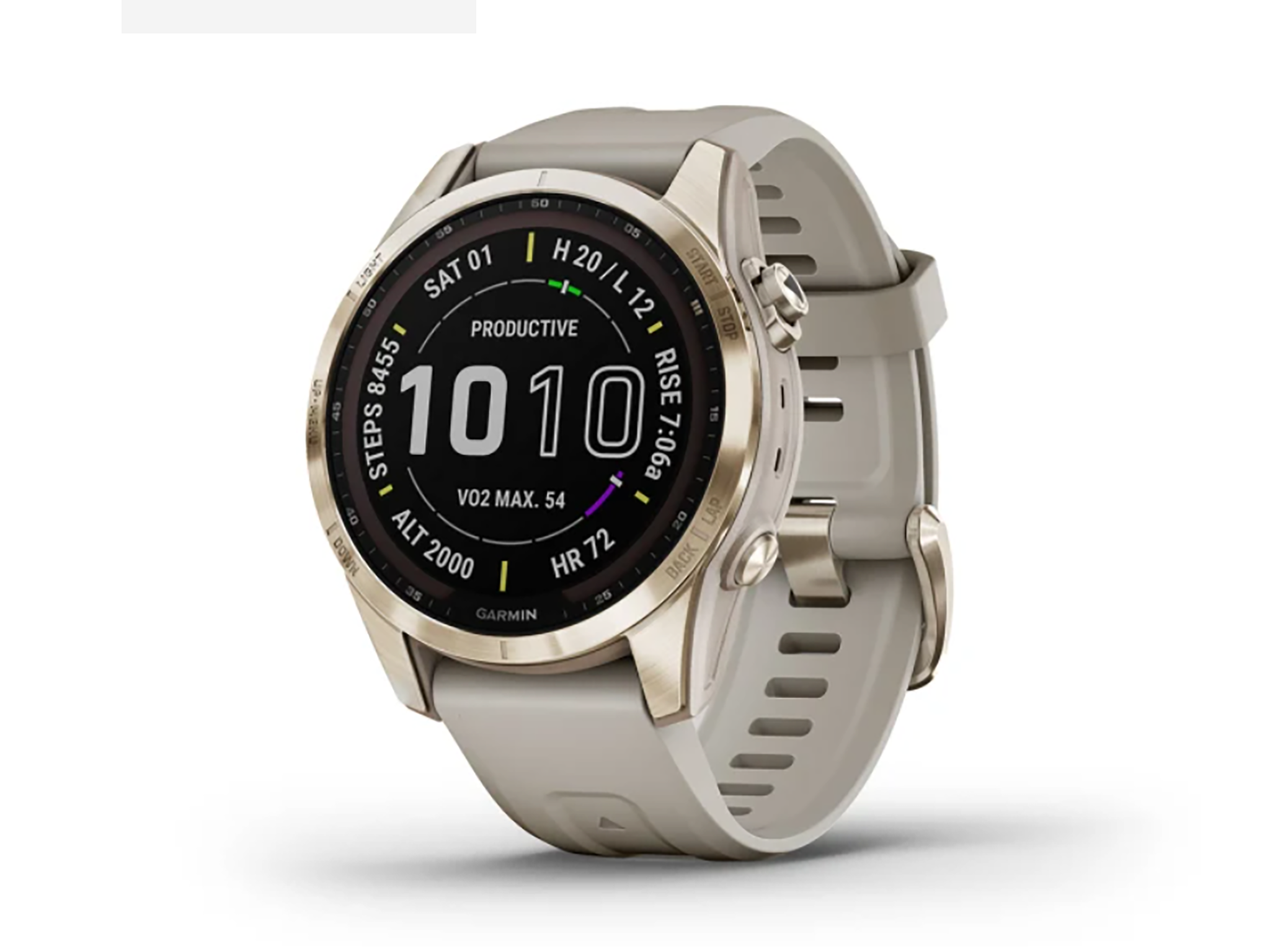
- Best: For competitive athletes
- Weight: 58g
- Battery life: 30 hours in GPS mode / 14 days in smart watch mode
The Garmin fenix 7s sapphire solar is the most visually attractive Garmin we’ve ever had the pleasure of putting on our wrist. Although it has five side buttons for old-school users, it also has a touchscreen which is fast and responsive. If you need to use a map during your run, you can use the screen to zoom in to find out exactly where you are and how long its going to take you to get home. And thanks to the solar-charge feature, you never have to worry about it dying mid-run.
We enjoyed testing the pace pro feature, which enables you to upload routes and have the fenix 7S guide you to a target time, telling you when you’re going too fast and when you can push harder. But it was after a run that we really appreciated what this watch had been recording. After every session, you can see data such as estimated sweat loss, cadence, calories, and time spent in heart rate zones. We could track our progress with VO2 Max and training effect figures and recover smarter with analysis of weekly training load and recovery time.
Admittedly, it’s an investment item but it does offer a lot of data in a stylish package. And if you enjoy other activities including cycling, swimming, bouldering, golf, surfing, parachuting, elliptical training or yoga, it can offer sport-specific insights to make you better at everything you try. We also approved of the watch’s music storage capability as the built-in music player offers room for up to 2,000 songs. There’s also offline playlist support for premium-level Spotify, Deezer, or Amazon Music.
Read our full review of the Garmin fenix 7 and epix smartwatches
Samsung Galaxy watch 5 pro
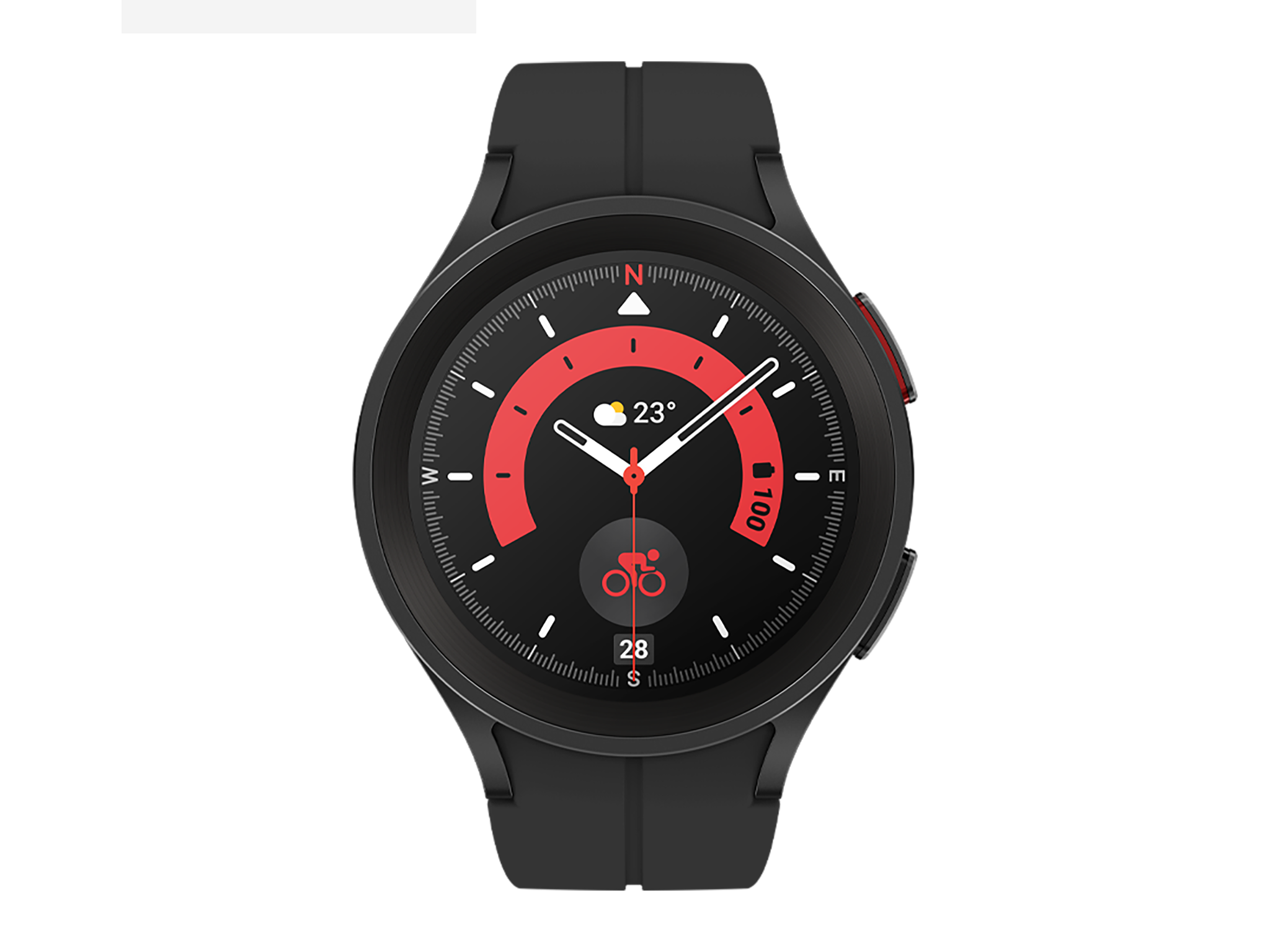
- Best: For Android users
- Weight: 46.5g
- Battery life: 20 hours with GPS / 80 hours in smart watch mode
Solid and functional, the Samsung Galaxy watch 5 pro has a rugged exterior with sapphire crystal glass and titanium casing built to take on adventures. That said, where this watch really shines is in its smart features such as the ability to take calls, send and receive messages and offer third party apps in its in-built app store. Google Assistant is enabled so you can say ‘Hey Google’ to make calls, send messages, set timers, get the weather forecast, check your calendar and more. Apps you can download via the Play store include Strava, YouTube music, Spotify and the meditation app, Calm.
We liked that you can head straight out the door with this without having to wait for a GPS signal. The Samsung Galaxy watch 5 pro can automatically detect and begin tracking walking, running, elliptical, rowing, swimming, and dynamic high-movement activities. After 10 minutes of starting one of these activities, the watch will alert you that it’s tracking the workout. When you stop, the watch will automatically stop tracking, too.
On an Android phone, the Samsung Health app is easy to use, showing you your day at a glance and offering some visually attractive graphs to look at. It can also explain your running metrics and tell you what to improve on by indicating if your asymmetry, flight time, vertical osciallation and regularity are good or great or show room for improvement.
Overall, we’d recommend the Galaxy watch 5 pro to all Android users but it’s a shame that it’s not compatible with iOS so you can’t use it with an iPhone.
Polar pacer
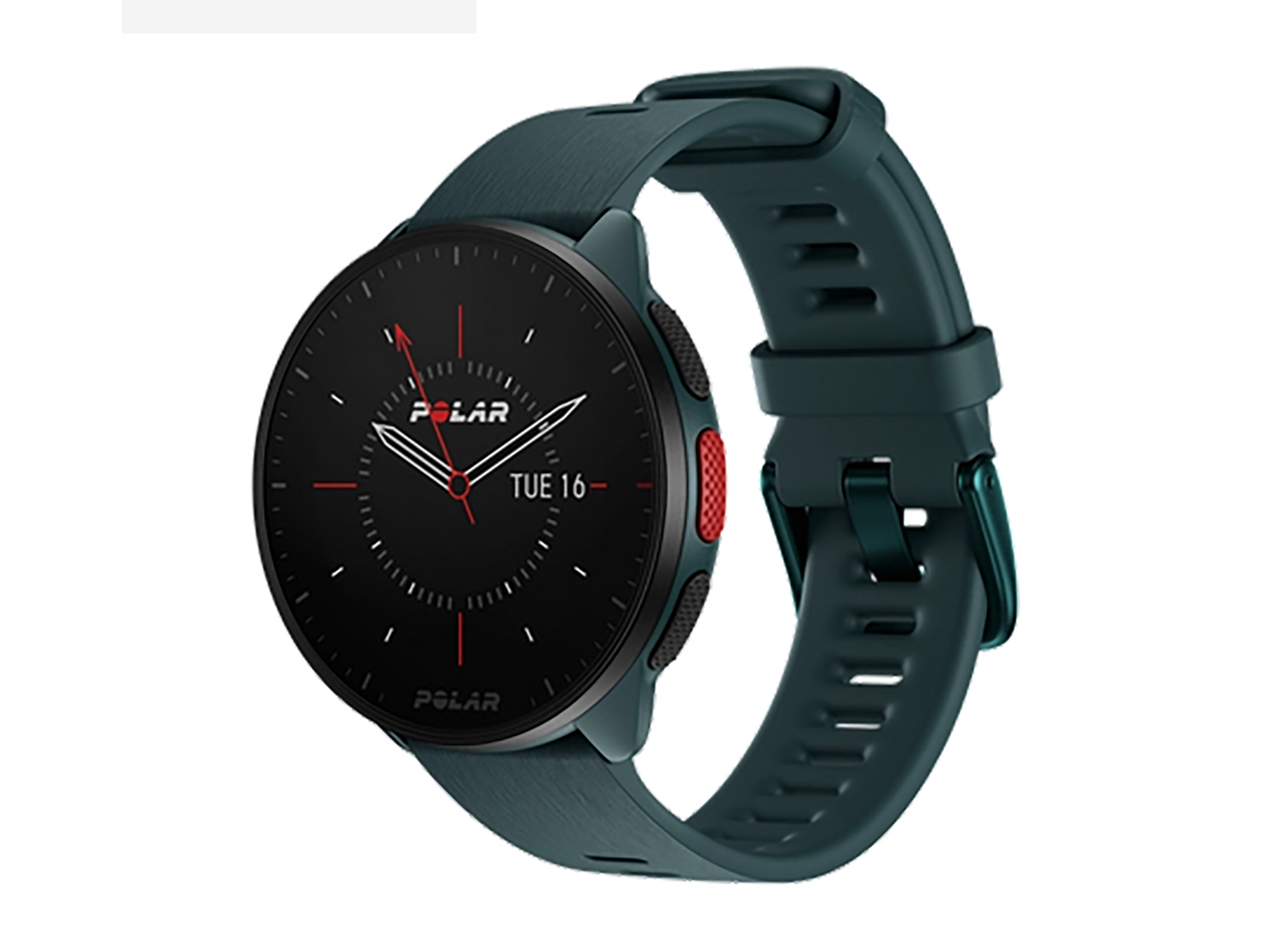
- Best: For an intuitive interface
- Weight: 40g
- Battery life: 35 hours in activity tracking mode / 100 hours in data-saving mode
The Pacer is the entry-level running watch made by Finnish brand Polar but it offers just the right amount of features for anyone wanting fast, easy access to key metrics. In fact, we’d go so far as to say that the Polar pacer is the simplest, most intuitive watch screen to navigate as you’re not bombarded by too many numbers or data insights.
The main screen contains heart rate, distance, pace and duration. Toggle through other screens and you’ll see elevation, more detailed heart rate metrics, music controls and Strava Live segments – this is extra handy if you’re aiming to be a Strava local legend or want to compare your performance over a specific route.
It’s easy to sync with the Polar Flow app on any smartphone to offer more detailed insights, offer training programs and monitor sleep and recovery. This app is enjoyable to use and is compatible with the Apple Health app too, so you can choose where to look at your stats.
Running watches FAQs
How to choose the best running watch for you
Size is one of the factors to consider first. Some of the bigger GPS adventure watches that also track running can be quite large, so we’ve included some smaller options in our round-up list here.
Also, consider the type of running you’ll be doing. If it’s road running or casual running around the park, most of the affordable options will be perfectly adequate for you. But if you want to get into trail running or venture into the world of competitive running, we suggest going for a running watch that provides you with a few more statistics on which to measure yourself against.
What is the best watch for running?
Overall, we found that it largely comes down to personal preference in terms of size, weight and wearability, but our favourite and the best in test was the Coros pace 2 (£179.99, Decathlon.co.uk).
There are two main reasons for this – firstly the low weight means it’s comfortable to wear for long periods, and secondly the price is very affordable for something that provides excellent accurate tracking (as good as some of the more premium watches).
It’s a shame it doesn’t really feature any navigation, but it doubles up as an excellent triathlon watch too, should you need it, which again is a great feature for the money.
Are running watches worth it?
Although some of the better-running watches out there are a considerable investment, there are some excellent budget and value-for money options that do most of the basic things the premium models do.
If you’re dedicated to running as your primary mode of exercise, we would strongly recommend a running watch. They allow you not only to track your progress, but often give you considerable insight into your overall health, how you can improve your cadence, for example, and how fast you’re likely to run a certain distance so you can see how you’re improving over time. For fitness fans, we think it’s one of the first purchases to make.
What is the most accurate GPS running watch?
In our testing we found that the most accurate running watches tended to be the models that were marketed more towards adventure and travel. They had pinpoint accuracy, no latency when it came to updating your position and found accurate GPS satellite signals quickly. That being said, these devices do also tend to be bigger and more expensive, so it’s worth trying a few to see what kind of compromise you’re happy to accept.
What do running watches do?
As we’ve already mentioned, running watches measure physical performance and activity primarily. They include features like heart rate monitoring, stride length, GPS tracking and oxygen level sensors to ensure you’re tracking your running progress. Where they differ from smartwatches is that they are less inclined to be focused on taking calls, messaging and social media, and instead look at providing updates on running performance to help you get the most out of your exercise sessions.
Can I leave my phone at home and use my running watch?
Yes – you can absolutely leave your phone at home, and when you’re back from your run, the Bluetooth on the watch will connect itself back up again and sync your data to the watch’s app on your phone. This tends to happen on most devices pretty automatically, and on many watches, you can also sync up music and wire-free headphones, which means you’ve got a pre-made running playlist stored in the memory of your running watch. Very useful!
The verdict: Running watches
The Polar pacer pro is lightweight, comfortable and motivated us to go for more runs so we could improve on the tests it set us. The Polar Flow app was intuitive to use and navigate through the tabs to find the information that interests you the most. But if you like to run phone-free with music, the Garmin forerunner 955 solar is worth investing in. And if you suffer from injuries, the Coros pace 2 could really help.
To keep your running gear in tip-top shape check out our choice of the best running shoes for women
Voucher Codes







